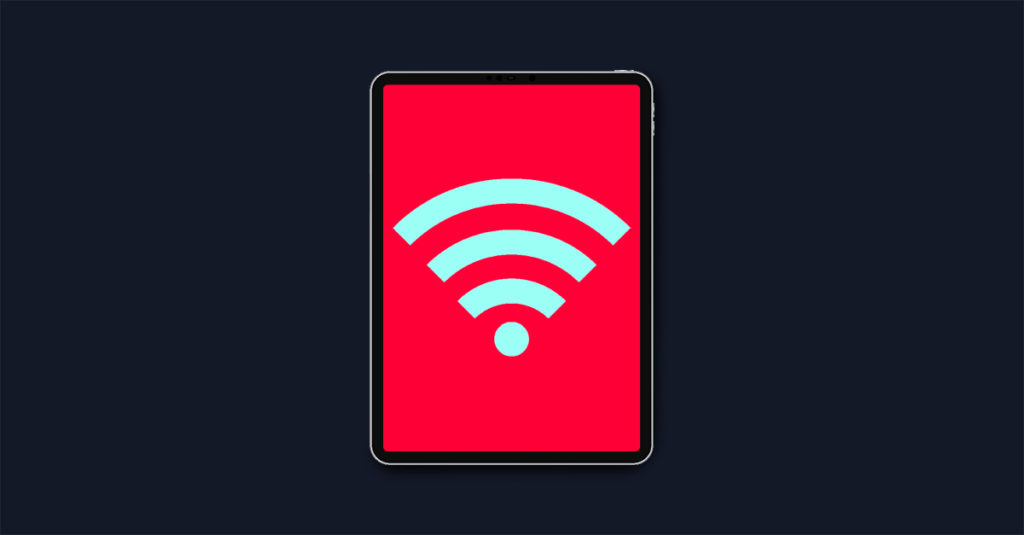
What Is Wi-Fi 6 and Why Does It Matter?
10 commentsAs the official technology for wireless networking, Wi-Fi is measured according to standards. Like the technology in your devices and tech equipment, updates are made regularly—roughly every five years or so in this case. Wi-Fi 6 is the most recent version of Wi-Fi technology. It’s faster, more efficient, more secure and better at communicating with multiple devices at once than previous versions. So, if you want the best wireless possible in your home, it’s a good idea to keep up and get the most from this update.
What are the new features of Wi-Fi 6?
This new version is a major upgrade. Here are some highlights that will mean a lot to your Wi-Fi:
It’s faster. Wi-Fi 6 can hypothetically hit speeds near 10 Gbps. Wi-Fi 5 maxed out at 3.5 Gbps. Note, this is a hypothetical speed, and it’s spread across your entire network, meaning it’s unlikely any one device will see speeds close to that. It’s still a useful benchmark for comparison.
It’s better for homes with lots of devices. Previous versions of Wi-Fi effectively made every connected device take turns to send and receive data, which is why the coffee shop Wi-Fi gets slower and slower as more people show up. Wi-Fi 6 doesn’t do this—it splits the wireless frequency up, giving a subset to every connected device. The result: less lag.
It works better in areas with lots of different routers. Wi-Fi service in apartment buildings can slow down because of overlapping networks. Wi-Fi 6 can uniquely identify traffic on your network, meaning activity from nearby networks is less of an issue. And it can get better: If you get a Wi-Fi 6E–compatible router, which is another step up in Wi-Fi 6, you can use the 6GHz spectrum, getting even faster speeds and lower latencies.
It’s more secure. WPA3 is the latest encryption scheme for protecting your internet traffic. Wi-Fi 6 makes this more-secure standard the default.
It’s better for battery life. Wi-Fi 6 can use Target Wake Time to allow smart home devices to activate only when they’re in use, meaning they don’t have to stay constantly awake and connected. With older routers, your smart home devices are constantly “checking in” with the router.
How do I get Wi-Fi 6?
You’ll need a new Wi-Fi 6 router. If you’ve just signed up with your internet service provider, you probably received a Wi-Fi 6 router. If you want to upgrade, feel free to purchase one yourself, or ask your provider to supply one to you. The advantage of getting a router from your provider is that they’ll make sure any software updates are sent automatically without you having to download them. And they’ll probably be able to address any maintenance issues for you, should they arise.
Will I notice a difference if I upgrade to a Wi-Fi 6 router?
Yes, especially if you already have a gigabit internet connection. With speeds that fast, your internet isn’t likely to be the main choke point—the connection between your router and your devices is. Having a new Wi-Fi 6 router is the best way to really take advantage of the speed you’re paying for, especially if you live in a large household with a lot of devices.
You can’t add Wi-Fi 6 to your older phone, tablet or laptop with a software update, so you won’t notice any difference in the performance of those devices. But if you bought a device in the past year or so, it’s most likely compatible with Wi-Fi 6, so you’ll notice the difference, and a Wi-Fi 6 router means you can take advantage of that.
If you live in a house where multiple people are on the Wi-Fi at all hours of the day, and you regularly notice slow speeds, upgrading to Wi-Fi 6 could help a lot. Whether you have multiple people streaming videos or a group of hardcore gamers, the reduced interference and lower lag is going to make a difference for all of you.
It’s worth noting that Wi-Fi 6 won’t speed up your internet connection—just how well your devices can access that connection. Seriously consider upgrading to a gigabit connection to really take advantage of what Wi-Fi 6 can offer.




When is the Wi-Fi 6 available through frontier?? And what is the cost post?
Hi Sandra, yes we do have Wi-Fi 6 hardware available to our customers! We’ve partnered with Amazon’s Eero brand to provide cutting edge Wi-Fi 6 mesh hardware. If you currently have service with us we would be happy to discuss options with you. The typical recurring charge is 5 dollars monthly per mesh device and there may be a one time set up fee. You are then able to manage the hardware using the Eero app on your mobile devices. We’re ready to help explore the options available, just reach out to us on Social Media on Facebook: m.me/FrontierCorp or Twitter twitter.com/AskFrontier or you can contact us over chat at frontier.com/contact-us. ^Michael
How do I order a Wifi 6a?
Hi Julio, you can reach out on Social Media – Facebook m.me/FrontierCorp or Twitter twitter.com/AskFrontier or you can contact us over chat at frontier.com/contact-us. ^Michael
what kind of area does the Eero cover
Hi Debbie, this is a great question, albeit a bit of a loaded one! Wi-Fi range can be a tricky subject and ultimately the superpower of the Eero, along with other mesh platforms, is not in the range of one device, but how several can work in concert to extend coverage within your home, seamlessly. A single Eero is rated for up to 1500 sqft, but that doesn’t preclude radio signal or physical interference from causing reception issues within that or an even smaller space. We’ve got you covered though! With our whole home Wi-Fi, we’ll make sure that the signal makes it where you need it on installation day! ^Michael
Actually I have an ero6 however it’s wifi range is poor when checking speed in the living room (where the hero was located )was getting speed around 500 mgb in my bedroom which is about 30 feet away separated by one wall I was only getting less than 100mgb around 3 signal bars where the main harris router located in my office which is 50 feet away separated by 2 walls was speed of about 125mgb in my bedroom. moved the eero6 in the basement below the bedroom I was able to get up to 300mgb and 5 bars on the signal meter. Other issue the router requires a cat 6 ethernet cable so its adding a second router to the network to expand the wifi I am an electrician I ran a cat6 cable and relocate the eero I am contenplating running a direct cable from the Haris router to the bedroom and return the eero6. I am going to try it wifi extender first (which does not require any extra wiring or ethernet cable)looking for something that would work with the Haris router. Will do a google search.
Any Raccomandation ? TY in Advance
Hi Joseph, these are great questions! Generally speaking a mesh is the preferred choice to extenders. I would consider adding more Eero’s to your environment if you need to increase coverage and disable the wireless broadcast from the Arris router or even go without the Arris router unless it is present due to dependent services (phone or TV). The Eero mesh devices can connect to one another, wireless (no Ethernet cabling necessary) or wired (Ethernet connected is superior). Your wireless signals are subject to the basic physics of the inverse square law which, when applied to wireless signals, you will lose signal strength by a factor of 4 every time the distance from the broadcast point is doubled. And that’s line of sight, walls and floors between access points will have an even more profound deleterious effect on signals. Wi-Fi signals are in the microwave spectrum, at or above the wavelength of a microwave oven, and even at over 1000 watts that ‘cooking strength’ 2.45ghz radio wave is completely contained by a sheet metal box. Wi-Fi is under 1 watt and while drywall and wood studs aren’t as effective as metal at containing or stopping these radio waves, there is still a significant impact. There are other factors to consider as well, and that is the use case and bandwidth needs over wireless to different areas of the home. The most common use for bandwidth today is streaming and Ultra HD 4k streaming usually maxes out at about 25Mbps, so even at a location within your home that you’re seeing 125Mbps, you could potentially have 5 simultaneous UHD 4k video streams without issue. You would be more likely to notice the difference from 500Mbps in one part of the home and 125Mbps in another if you were downloading exceptionally large files from the internet. I hope you find this information helpful, and please feel free to reply with any additional questions! ^Michael
Can you have more than one ero6 booster?
Hi Rodney, not only can you have more than one but Eero/Amazon doesn’t seem to list any type of limit, though I’m sure there is one, but unless you’re trying to cover an Amazon shipping warehouse with Wi-Fi it’s unlikely you would ever need more than 3-4. The great thing about mesh networks like Eero’s is that they’re much more than just boosters. They intelligently repeat your network and allow your devices to seamlessly move between these access points depending on which provides the best signal. With our Whole Home Wi-Fi, you can add Eero access points to your home network for a small monthly fee or if you’d prefer you can purchase them directly from Amazon at retail. If you’re interested to learn more about our Whole Home Wi-Fi, you can connect with us at the Social Media links below! ^Michael